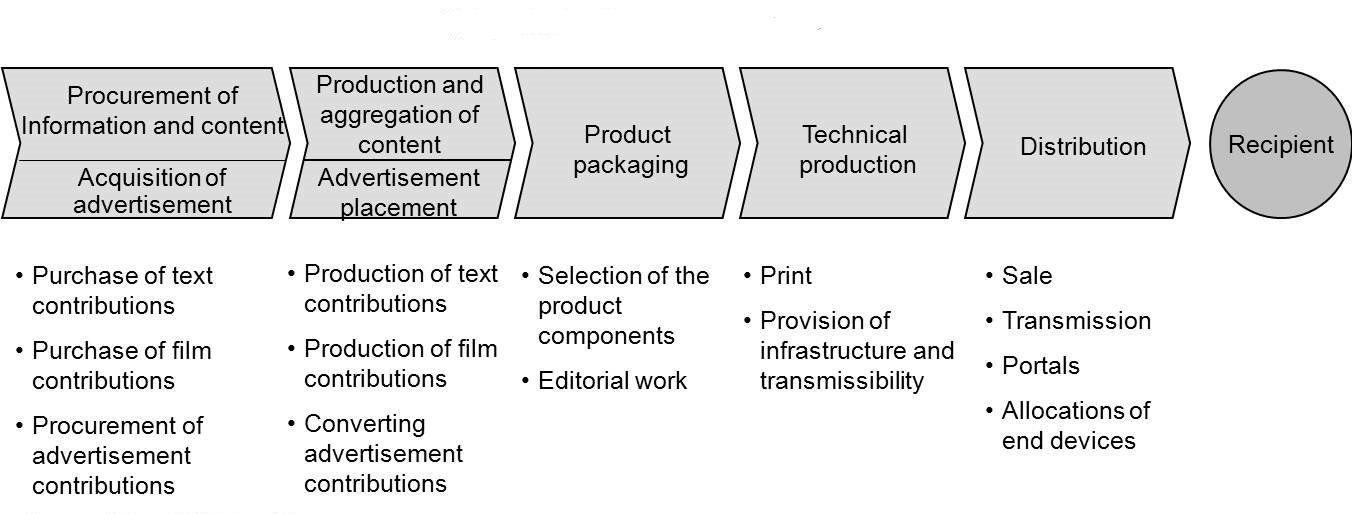
The psychology of accessing media channels is being replaced from a linear, community experience (sitting down to watch TV) with a multi-channel and ever-more personalized world. Increasingly rich media marketing campaigns are being fueled by the interaction element, whether it is about games or membership clubs or coupons. Mobile TV and other mobile media is changing our consumption of programmes and accelerating the blurring of the lines between adverts and programming. There is the blurring of ads with programmes and the blurring of games, with branding and with the programmes themselves. Mobile advertising is widely regarded to be inevitable given the ubiquity of the device and its ability to deliver on all of the four 'Ps' of traditional marketing parameters. Smartphones have plenty of processing power to handle the types of rich media content and displays required for quality advertising. Consequently, this ‘third screen’ is being established as a viable choice for advertisers wanting to create advertisements of the quality that are available on other digital media. Although the free-to-air TV culture still dominates, in the future services will be more interactive with many facilities for voting during TV shows, for indexing channels or even programming the home media player direct from the smartphone. The advertising bundles being offered by operators like EE, Vodafone, TIM and 3 Italia in Italy can come in two different flavours: instream advertising as in traditional broadcast TV, but it will increasingly come in the form of more profiled advertising, and sponsorship around the browser tool, with sophisticated activities like voting or gaming built into the content. Blurring of reality To get to the fundamentals of this shift, we should remember that the blurring of entertainment and persuasion, is not just a new concept confined to the online world. The first soap operas were in fact TV shows that were geared toward housewives, given the fact that they were home during the day. What did housewives do in those days? Housework and laundry. Thus, the soap companies attached themselves to these programmes and were usually the primary sponsors, sometimes even getting recognition in the show titles, along the lines of 'Palmolive presents All My Children'. Reality TV shows are another parallel trend, leaving behind an even bigger impact on consumers than that of regular television. Research into this area shows that people tend to exaggerate the negative effects of this blurring of the lines on other people, while they feel themselves to be relatively little affected. With the growth of the Internet, advergames have meanwhile proliferated, often becoming the most visited aspect of brand websites and becoming an integrated part of brand media planning in an increasingly fractured media environment. Advergames theoretically promote repeated traffic to websites and reinforce brands. Users choosing to register to be eligible for prizes can help marketers collect customer data. Gamers may also invite their friends to participate, which could assist promotion by word of mouth, or viral marketing. One is certain: the blurring phenomenon is growing. Fans of 'American Idol' for example are bombarded with over 100 product placements for each episode. 'American Idol' exceeded expectations, averaging 12.7 million viewers in its first season back in 2002. The show brought initial sponsor Coca Cola to viewers young and old alike, as 'Idol' at the time had a younger-than-average median age for prime time TV and was one of the few shows that truly crossed generations. Product placement for British TV was only approved in 2011, allowing for example the placement of Coca Cola drinking glasses for use by the X Factor judges. This change is bringing in around £100m (US$160m) of extra funds for commercial broadcasters, although not for the BBC. In the US, paid product placement is at around £3.4bn (US$5.5 bn), with TV accounting for 75% of the total and movies 25%. Media blurring is intended from the marketer’s point of view to overcome the problem with advertising, which is that it creates a 'reality' that is not real, in that it creates an unrealistic set of norms of what it means to be beautiful and have an affluent material lifestyle. Adapting advertising, and even personalizing it down digitally to the level of the individual, allows the marketer to speak directly to the culture and values of the audience. The opponents say the hijacking of content by marketers makes a mockery of TV ad limits, threatens public health, and undermines parents' ability to monitor media and marketing influence. Today mobile TV consumption is converging with the goal of agencies, which is to create more control, flexibility and metrics for their campaigns. This is such that nowadays with mobile TV, very little is talked about passive advertising or banners, and it is much more about integrating a campaign with the programming and using pay-per view. The mobile video technology choices are being driven by the need to connect with this new group of content providers and aggregators, in an increasingly complex media world. Mobile firms are increasingly morphing into content firms and vice versa. So, what makes for a successful rich media campaign in mobile? Why is stealth advertising so effective? Professor LJ Schrum, Head of Department of Marketing at the HEC Paris is an expert on consumer socialization, brand communities and the interaction of media and society. He is also author of an interesting book on the subject, 'The Psychology of Entertainment Media: Blurring the Lines Between Entertainment and Persuasion'. "In product placement, the marketer putting the product in the programme is trying to blur the lines, for example with programming created for a specific proposal," says Professor Schrum. "My work originated from a focus on how people digest information. When we view a TV programme, we lower our resistance. We reduce our protection to counter-argue the programme and we tend not to process cautiously." In his book Professor Schrum details the role of television in the construction of consumer reality. He says that in cases of relatively high levels of TV consumption, the viewers rate the programming as being rather closer to real life compared to occasional viewers. He wants future research to examine the relationship between the viewers' perception of reality and reality TV programming by using different methods of testing the viewers’ reality perception to see if the effects remain constant. "It becomes pretty insidious at the point that companies pay ordinary users to engage in viral marketing, or pay customers to go into a bar and recommend a certain brand," he adds. "Marketers are in danger of taking a nice viral [opportunity] and ruining it." Advergaming up, advertising down "The reasons behind this development are rather simple, but critical to a media industry undergoing rapid change in an era of ad-skipping technologies and accelerating audience fragmentation," says Patrick Quinn, President of PQ Media, a New York firm which publishes research on the size of the product placement market. "Technological advances and continued audience fragmentation, due to the growing popularity of new media like the Internet and video games, have led major marketers who are already skeptical of their return on investment in traditional advertising to become even more dispirited with the old means of reaching target audiences," he adds. As a result, advertisers are more than ever questioning the relevance of the 30-second TV spot, as their messages become scattered in the increasing advertising clutter or omitted altogether by a more empowered consumer who can skip them with the touch of a button. To compensate for this perception of diminished advertising returns, marketers have substantially ratcheted up the role of product placement in their buying strategies. In short, product placement—the seamless integration of products into media—is becoming an integral part of a larger marketing package for many advertisers that includes traditional advertising and alternative marketing such as product placement. The advergame industry generates an estimated US£1bn a year in revenues through platforms like FarmVille by Zynga, according to a report by eMarketer. Facebook games based around advertising now achieve over 1 million monthly active users, with many of these coming through mobile usage. Whether its referred to as advergaming, ad-funded gaming or casual games, the advergaming industry revenues are rising fast on mobile, iPhone, social networks platforms. Targeted user information continues to emerge about who plays games, spurring interest on the part of advertising agencies who can use games to reach specific markets. Broadening of interest has meant that gamers are not just teenage males, but men through to 35 years and beyond as well as women between the ages of 35 and 55. Most consumers attempt to ignore banal advertising on the web, so why does advergaming work? As marketing communication expert, Lee Ann Obringer, says, "as long as the game delivers a fun pay off, consumers consider it a relevant and valid cultural experience. In recent brand-impact studies, associating a brand with the fun of gaming is known to lift brand metrics such as brand awareness, message association and purchase intent. After playing a game, consumers are more likely to remember not just the brand or product itself, but to associate specific attributes with it." Insights and opportunities Notwithstanding the obvious hype and potential, there is a tangible sense of trepidation as to how to introduce mobile advertising to subscribers in a way that is not perceived as intrusive. This is where a more viral approach works. The mobile phone is a highly personal device characterized by ‘always with’ and ‘always on’. Therefore insensitive exploitation of the medium with mobile spam will lead to a backlash. Stakeholders of all shapes and sizes (web portals, operators, handset vendors, content creators) are therefore advocating a very soft touch to mobile advertising with two golden rules. Mobile advertising must be valuable. Whether as a redeemable electronic coupon or a location specific SMS message, the advertisement must match the expectations and desires of the end user otherwise it is an unwarranted intrusion. Mobile advertising must be optional. Subscribers need to be able to choose the type of advertising and the frequency of delivery, with controls placed firmly in the hands of the recipient. So for agencies the implications are clear: getting consumers to use and play with content, and to get involved or vote, make the brand message more memorable. This new world of multi-platform TV and mobile viewing will only accelerate this change to more viral and interactive advertising. Get in touch New business: 07748 187 227 Careers: 07748 187 227 Press enquiries: 07748 187227 Or drop us a line at info@vireous.com

